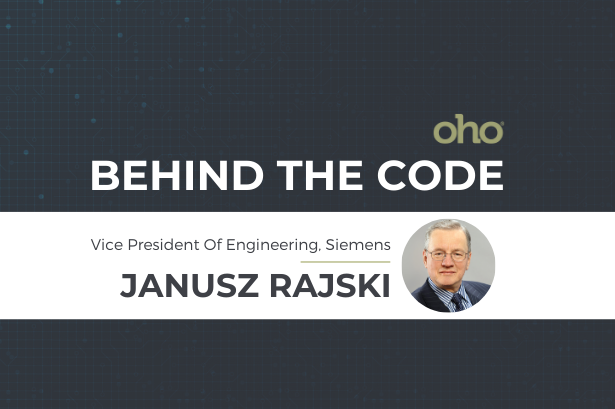
The Science Behind Santa's Sleigh
18 Dec, 20235 mins
It’s the most wonderful time of the year for a deep dive behind the scenes of one of science’s greatest mysteries: how does Santa’s sleigh get in the air in the first place, and how can he then cover the entirety of the world overnight?
Blitzen Through the Sky
First up; getting airborne. Reindeer, sadly, can’t fly. They can do lots of other cool things, though. Their noses are some of the most specialised in the animal kingdom, with internal surface areas so large that the (sometimes -40℃) air they inhale is warmed by as much as 70–80℃ before it reaches their lungs. This, if anything, explains the science behind Rudolph’s red nose, which clearly converts some of that heat into light. The same process works in reverse; the warm air that reindeers exhale is cooled rapidly in order to conserve body heat. It is also dried, so that they retain moisture.
All the nasal thermal control in the world won’t get a sleigh in the air, though. To quote the classic Christmas-adjacent film Chicken Run*, that requires thrust.
Fortunately, there are various ways of thrusting Santa into the air, and keeping him there. Some of these are, at present, quite speculative: quantum levitation, a property that is observed in superconductors, for example, isn’t yet understood well enough to make anything fly.
However, an electric vertical take-off and landing (eVTOL) system could do the trick. These are essentially battery-powered mini-helicopter systems, and are already being used to power “flying taxi” prototypes, such as those manufactured by German start-up Volocopter or the UK’s ARC Aero Systems.
Fit enough of these little battery-powered fans to Santa’s sleigh and he’ll be ho–ho-hovering in no time.
*Chicken Run belongs in a category of films we like to call “Christmas-adjacent” which, despite not being set in winter or featuring anything Christmassy, are such popular family favourites that they’re almost always aired some time around Christmas Day. See also Jaws, The Great Escape, and most of the James Bond franchise Not to be confused with Die Hard, which is a “Christmas-time” film; one which is set during or around Christmas, but which isn’t particularly Christmassy.
A Supersonic Dasher
Once in the air, the sleigh needs an engine powerful enough to get it around the entire globe in a single night. There’s a bit of maths involved in establishing how fast he has to go in order to achieve this.
First up: how far does he have to travel? The earth’s circumference is 24,901 miles (40,075km).
Secondly: how long is a night? Just to keep the maths simple, we’ll call it 10 hours — from 10pm on 24th December, to 8am on 25th December.
Confusingly, though, Santa actually has quite a lot longer than 10 hours, because of the shape of the earth. The international date line runs roughly north-south through the Pacific Ocean, with some detours to account for international boundaries and certain island groups.
In the north, it separates Siberia from Alaska. So, at 10pm on 24th December in Siberia (where he starts), it’s 10pm on 23rd December in Alaska (where he finishes). Santa can follow the night around the earth (east to west, or counter-clockwise), and as long as he makes it to Alaska by 8am on 25th December, he’ll have made the whole trip on the night of Christmas Eve.
In other words he actually has 34 hours; the length of the night of Christmas eve (10 hours), plus the 24 hours it will take for the international date line to “catch up” with where he started.
So the sleigh needs to travel at 24,901/34 = 732.38 miles per hour (mph) in order to complete the trip.
That’s very fast. The speed of sound isn’t all that much faster, at approximately 761mph. Fortunately, as we know, several man- (or elf-) made objects have broken the “sound barrier” over the years. This was achieved for the first time in 1997 by a car named ThrustSSC, which holds the land speed record.
But having got himself airborne, Santa isn’t constrained by land speed. He’ll be travelling in what space scientists call low earth orbit (LEO), and rockets from NASA and private operators like SpaceX routinely travel at over 17,000mph in order to reach that level.
Provided that the sleigh was fitted with the appropriate engines and enough fuel to sustain them for 34 hours, that speed would get Santa round the earth’s circumference 23.21 times during his 34 hours. Which is important, because as the eagle-eyed will have noticed, a single lap around the equator would leave a lot of houses in both hemispheres unvisited. So while travelling east-west, Santa will also incorporate 20 or so north-south zig-zags, to ensure full coverage.
Obviously, how Santa actually gets his sleigh around the world is a closely-guarded secret. But hopefully here we’ve shone a light on how it could be done. If you think you can improve on our combination of an eVTOL levitation system combined with rocket jets for propulsion, let us know in the comments!
In the meantime, we wish you all the best for the holiday season from everyone here at Oho Group. Please get in touch with us now or in January if you’d like to explore a new role in the new year.

